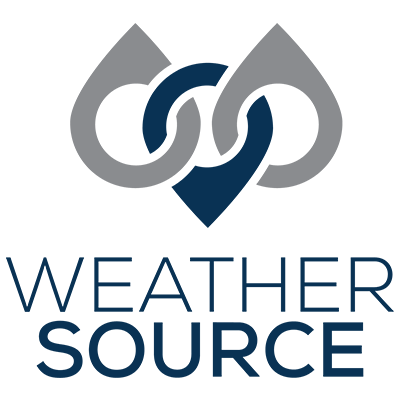A 2017 Teletrac Navman survey indicates that the most serious physical obstacles for truckers are traffic congestion and decaying infrastructure, but weather also plays a major factor that results in delays and disruption as extreme weather events increase in severity, duration and frequency, and the problem is getting worse. Storms and extreme weather events are on the rise evidenced by the fact that 2017 was the most economically disruptive hurricane season in U.S. history.
These record storm years are continuing and in 2021, there were 20 weather and climate disasters the United States that cost at least $1 billion each, according to the National Oceanic and Atmospheric Administration (NOAA). When taken together, billion-dollar disasters carried an incredible economic toll of $145 billion last year.
Telematics, the science and technology of sending, receiving and processing information via telecommunications is growing substantially in both its advancement and application of the data every year. One of the most novel ways that telematics is being utilized today is in fleet management and connected cars and this is just touching the surface as to the applicability of this incredibly useful data and there are additional broad uses including autonomous vehicles, location information, marketing, safety, congestion, re-routing and more.
With this progress telematics is poised to have a substantial impact in transportation industry, not only in fleet management and connected cars but reaching far beyond that into diagnostics, engineering, manufacturing and more. Taking it one step further, the next logical step in advancing telematics is by syncing it with weather data to enhance and improve not only driver safety but also driver efficiencies for commercial and personal vehicles.
According to Teletrac, telematics as it relates to weather can serve three primary functions:
- Receiving weather reporting and forecasting data.
- Showing vehicle drivers or fleet managers current or changing weather.
- Seeing planned and updated routing based on weather conditions.
However, Teletrac is missing one additional use which is the identification of road level weather events using vehicle sensor data such as cameras, that are not captured by observation stations, satellites and/or radars that impact roadways (i.e., low level fog or precipitation, low visibility, wet roadways, etc.).
As car manufacturers advance technology for personal vehicles and commercial vehicles – there is tremendous value in knowing where precipitation, hail, lightning, high winds, and other severe weather are occurring or threatening to develop which can save valuable travel time, fuel costs, and improve driver and occupant safety when weather is used to re-route or alert vehicles. With so many different driving risks associated with weather events, weather intelligence is the ultimate solution for enhancing vehicle telematics as weather conditions often change quickly and drastically.
Toyota started experimenting with this technology in 2019 to increase the accuracy of weather observation and forecasts and improve driver safety using weather data and the data obtained from Toyota’s connected vehicles. With that, studies show that the rate of accidents during rainy weather is four times that of sunny days, so the presence of precipitation has a large effect on the safe driving of vehicles. However, raincloud radar, which is often used to detect and predict rainy areas, has the disadvantage of being unable to detect rain resulting from rainclouds in the lower layer of the troposphere (an altitude of 6,560 feet or below), or small raindrops such as those that form during drizzle. In those cases, it has been difficult to accurately determine areas where it is raining traditionally. Having access to not only hyper-local weather information but also the vehicle sensor data (i.e., did the automatic windshield wipers go on?) will allow users the ability to ascertain whether there is actually low precipitation (i.e., when the vehicle location is correlated to the present condition data on the roadway) or did the vehicle drive under an overpass, or did the driver clean the windshield.
Honda is one of the latest to start to delve into this realm. This past December they announced a trial to use its cars to collect data about hazardous road conditions. Using GPS and cameras, they are gathering real-time road information about poor lane markings or potholes, which it can then send to municipalities for future improvements. This is no different than picking up weather events that are occurring on the roadways.
The pilot project, which is being run out of the Honda Research Institute, is the first to use connected vehicle technology to capture accurate data on road conditions, the company said. For now, Honda is collaborating with one state, the Ohio Department of Transportation, and plans to start providing road condition data in early 2022.
Honda will also collect longitude and latitude coordinates, along with relevant images and video clips, which it then anonymizes and streams to a “secure platform” for analysis. Road operators will have access to the platform to identify the location, type, and severity of the road condition and hazard information, and obtain a still image and video.
Utilizing telematics data and pairing it with weather data, combined with route data, the information can be used to dynamically reroute a vehicle. Furthermore, by correlating vehicle performance (i.e., hard braking incidents, etc.) with weather data makes it possible to see if weather was a factor in the event providing the vehicle manufacturer with incredibly useful diagnostics data.
Weather influenced applications such as Weather Source’s “Weather Aware Routing” which dynamically and seamlessly meshes weather data with roadway data that is powered by a proprietary and novel routing algorithm allows vehicle operators to receive instant updated routing information based on the weather on the roadways.
Combining telematics with weather data to enhance routing, improve vehicle performance and route optimization is just the beginning. There are marked benefits in utilizing telematics teamed with weather data including increased safety and efficiency to mitigate risk and reduce costs. By modeling and analyzing weather and traffic data together it is possible to identify and manage weather risk, not only for fleet management and connected cars but for a wide array of transportation sectors.
Weather Source currently works with several organizations assisting them to do just that – including managing operational risk, logistics, transportation/delivery solutions and more by monitoring current and predicted weather conditions to optimize efficiencies and plan for weather events and anomalies that can cause disruptions. Talk to us about how we work with organizations so that they have the ability to provide improved and advanced operations and also protect vehicles, cargo, and drivers from adverse weather hazards.



